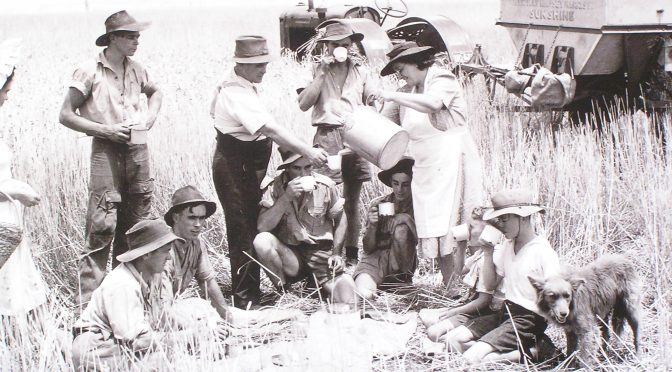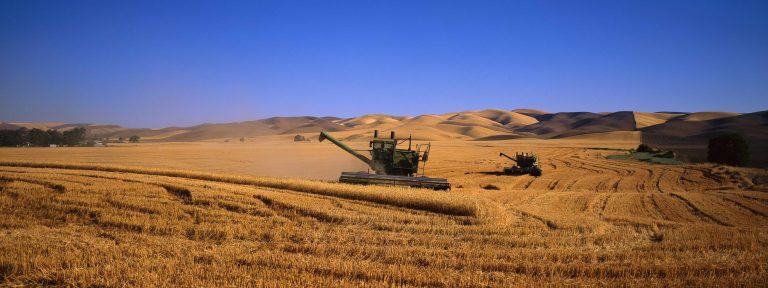ARLASH: Emptying an Almost Empty Land
February 28, 2017 dmarsh1@bigpond.net.au
When I came to Boorowa in 1971 there were fifty two children going in to town on the Cowra road school bus. Today there are only three on the same bus. This is a common theme all over Australia. Where have the people gone? Perhaps more importantly, why have they gone?
The popular reason given is that the terms of trade in the farming game have made it unviable to employ station hands. Another part answer is that mechanisation has led to less need for employees. Contractors have filled some of the now vacant spaces left by the lower levels of rural employment.
Once, most farms had a farming plant consisting of a tractor, disc plough, scarifier, harrows and a combine for sowing. The plough, cultivator and harrows lost favour for several reasons, namely, cultivation destroyed soil structure, and the time and fuel costs were hard to justify when compared with the seeming efficiency and lower erosion risk of using herbicides. Over the last thirty years with the advent of herbicides, a spraying machine of some sort has been considered essential. In districts like the south west slopes of NSW where we farm, many farm businesses have found it difficult to justify replacing their ageing plant, and have begun to rely on spraying contractors and sometimes sowing contractors as well. Perhaps the fact that plant was too big a capital item to replace means that the farming system could not make enough to cover the costs of maintenance. Machinery of all sorts has kept on growing larger, reflecting the demand for getting large areas of crop prepared and sown in a specific window of time and with a minimum of labour.
All the above reasons for the depopulating of the Australian landscape seem logical enough, but they miss one factor that I have never seen mentioned as a possible cause. The missing part of the equation is that I think we have converted so much of the original Natural Capital existing when Europeans started farming this land a little more than two hundred years ago, that the land simply cannot support as many people as it once did. Natural Capital has been converted into other forms of capital, roads, bridges, fences, houses, institutions like education, churches, Universities, the Law, energy supply. All the things that make up the society we enjoy and certainly don’t want to give up. When we convert all this natural capital, we call the money made from the conversion, income, but it is in fact a liquidation of capital.
We all know that a business that consumes its capital will soon fail.
When we convert natural capital to other forms, this plays out on the farm as a business that has increasing cash costs. These cash costs are in the form of purchasing the goods and services once provided at no cost by a diverse community of life. The simplified community left after the wholesale conversion of natural capital can no longer provide the services of water filtration and storage, weed control, soil structure, nutrient recycling, storage of humus, (soil carbon), seed and seedbed provision, erosion control, nutrient recycling, maintenance of structure and diversity.
Yesterday I was in a Sydney supermarket and I eavesdropped on a few conversations as people, mostly a parent with some children chose items for their trolley. Firstly I was heartened by several discussions about buying organic rather than the industrial version of a product. Secondly I was buoyed by the number of items for sale with a story about how they were produced. It seems there is a growing groundswell of mindful purchasers. Perhaps feeding people, including farmers, information about the negatives of the industrial or commodified way of producing food may not be the way to drive change. It is just possible that the customer’s desire to eat a more nutritious and healthy diet could be the catalyst for change on the farm. Farmers certainly react to price signals. When the sheep market has a decline, there is a gradual swing to cropping and cattle. Nothing is static, witness the booms and busts of the dairy, pork and beef enterprises, not to mention the wool market roller coaster.
Making healthy choices about eating could be the greatest saving for the national health budget. Currently the cost to the nation of diabetes is $6 billion annually and rising. Recently there has been a move to introduce a sugar tax. Processed food, the increasing amounts of sugar in many food products and aggressive marketing by large corporations driven more by profit than ethics, have fuelled the increase in obesity and diabetes in our people. Is it morally defensible for corporates to take a free ride on profit while marketing products they know cause an epidemic of chronic illness?
People seem to be making their own minds up about healthy eating, leading to lower medical costs and less chronic illness in society. We are taking small steps in the right direction and have a long way to go before this trickle becomes a flood.
I have been almost thirty years on a quest to influence the process of change to land management that is profitable whilst allowing the inherent regenerative capacity of landscapes to be expressed. This is a long game and one which will not be easily won. For me it has been a journey of digging out information that has led to a different understanding of ethical land management. At times it seems the forces amassed against the idea of doing things that we know deep inside us are right and good for the Earth, are insurmountable. However, some of the most inspiring work humans have done are in times of crisis.
This is what fills me with hope
When families see their children falling victim to food that leads to ill health and lives of limited options, many are moving to food that promotes health. When you see the number of organically produced products in our shops it is obvious the corporations running them are shifting their range to what people are demanding.
As humans we are weak, we blunder on blindly, Lemming-like in pursuit of things that seem to offer value at low price, while not thinking about the consequences and costs in ill-health and low option futures.

